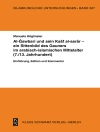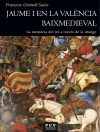For many centuries Germanic peoples occupied much of northern and
central Europe. From the fourth century onward migrant groups
extended their power and influence over much of western Europe and
beyond to North Africa. In so doing, they established enduring
states in France, Spain, Italy and Britain. This illustrated book
makes use of archaeological and literary sources to outline the
ethnogenesis and history of the early Germanic peoples. It provides
an overview of current knowledge of these peoples, their social
structure, settlements, trade, customs, religion, craftsmanship and
relations with the Roman Empire.
In this second edition, the author incorporates important new
archaeological evidence and reports on advances in historical
interpretation. In particular, he offers new insights into
developments in central and eastern Europe and the implications for
our understanding of migration and settlement patterns, ethnicity
and identity. Ten new plates have been added featuring significant
new sites discovered in recent years.
Tabella dei contenuti
Introduction.
Part I Germania.
1 Land and People.
2 The Social Fabric.
3 The Germans and the Advance of Rome.
4 The Living and the Dead.
5 Trade and Diplomacy.
6 Cult, Art and Technology.
Part II Germanic Europe: Frontier Societies.
7 The Gothic Kingdoms.
8 The Suebi and Vandals.
9 Franks, Alamanni and Burgundians.
10 The Northern Peoples.
11 The Gepids and Lombards.
12 The Thuringians and Bavarians.
Conclusion.
Sources.
Bibliography.
Index
Circa l’autore
Malcolm Todd is an Emeritus Professor of Archaeology and former Principal of Trevelyan College in the University of Durham. He is the author interalia of ‘The Northern Barbarians’ (Second Edition, Blackwell Publishing, 1987) and ‘Roman Britain’ (Third Edition, Blackwell Publishing, 1999), editor of ‘The Blackwell Companion to Roman Britain’ (Blackwell Publishing, 2003) and a contributor to ‘The Cambridge Ancient History’ and ‘Der Neue Pauly’.












